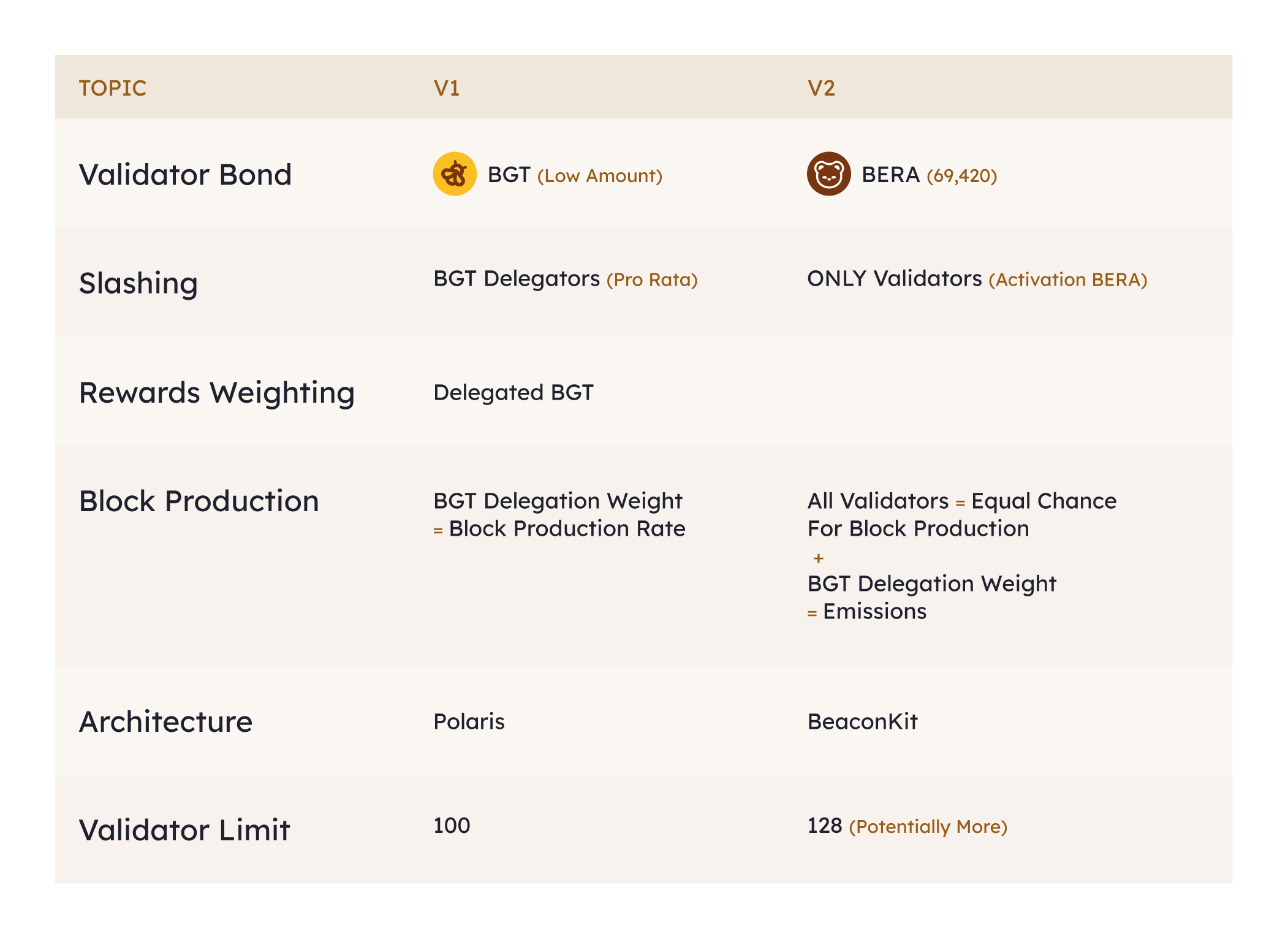Berachain Testnet V1 vs V2 🆕
On June 9, 2024, Berachain officially launched version 2 of its testnet called
bArtio.
The Berachain bArtio network is a re-architecture of the chain to make it more modular and EVM-aligned. In order to achieve these goals, an entirely new framework was needed and BeaconKit was born.
V2 is an implementation of the BeaconKit framework, which separates the execution and consensus, and focuses on implementing an consensus client that can be paired with any EVM execution client (Ex: Geth, Reth, etc).
Main Changes from V1 to V2 🐻
Berachain's V1 testnet (Artio) was built on top of Polaris, which tightly coupled EVM execution with the Cosmos SDK and introduced a monolithic framework for building highly optimized precompiles.
Despite this optimization, Cosmos could not handle the volume of transactions that Berachain received, alongside the compatibility challenges that came with precompiles and supporting a forked EVM execution client.
![]()
V2 introduced a modular architecture of separating the consensus and execution layer. Compared with V1, where validators would run a single Polaris client, V2 validators would need to run 2 clients, BeaconKit client (for consensus) alongside any EVM execution client (e.g. Geth, Erigon). This modular approach allows for specialization of concerns - for the execution layer to benefit from EVM innovations, and for BeaconKit to provide a highly customizable and performant consensus layer.
In addition to the technical changes with BeaconKit, the economic design of Berachain's native tokens has evolved. The following table highlights the main changes between V1 and V2:

Some significant points to note:
$BERAis staked for activating validators, rather than$BGT.$BGTdelegators no longer at risk of slashing.- The execution layer is now EVM identical.